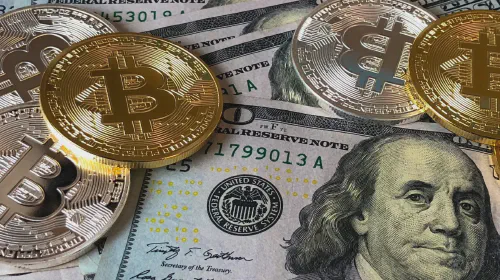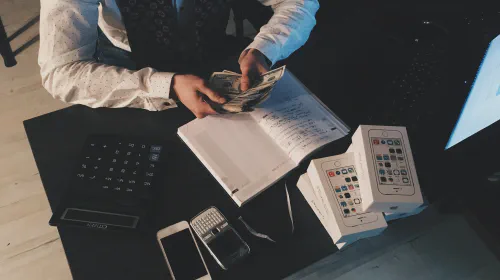Which Banks Use Ripple XRP and Why? Insights on Adoption and Benefits
Salomon Kisters
Aug 15, 2022This post may contain affiliate links. If you use these links to buy something we may earn a commission. Thanks!
Since the 2009 launch of Bitcoin, there has been an explosion of cryptocurrencies in the marketplace. Crypto buyers have plenty of choices for digital currencies they can use for trading. There are a few notable contenders for trading alongside Bitcoin, like Ethereum, Dogecoin, Ripple, and Monero. But many cryptocurrencies have also faded into obscurity or are limited to niche applications.
The leading cryptocurrencies have stabilized over time and are becoming an integral part of several financial and industrial ecosystems. Almost all of these major cryptocurrencies can now be traded across many international exchanges, making their way into the formal banking systems of select countries. Along with Bitcoin, these cryptocurrencies are getting closer to mainstream acceptance.
Ripple’s XRP is one of these established cryptos that has gained momentum over the last few years. The cryptocurrency drives the innovative XRP ledger technology. It experienced a boom in late 2017, and its value has stabilized over recent months. Ripple has been driving the backbone of payment systems for many banks now. In this blog post, we’ll explain what Ripple is and give you an idea of which banks use its token currency. Read onwards to learn more.
What is Ripple?
Ripple is a cryptocurrency company based on the XRP blockchain – an open source distributed ledger for financial transactions. The XRPL was developed by a trio of developers named David Schwartz, Jed McCaleb, and Arthur Britto, along with their associate, Chris Larsen. The four entrepreneurs co-founded Ripple in September 2012.
The developers wanted to create a secure blockchain solution for businesses with fewer downsides than the original Bitcoin blockchain. They wanted to create a way to make transparent, cross-border RTGS with lower costs and shorter transaction times. For this, they developed the Ripple Transaction Protocol (RTXP) for quick money transfers.
Instead of disrupting the banking system, the Ripple founders looked to help it become more efficient. Ripple is, therefore, better positioned to facilitate the transaction needs of financial businesses.
The company initially had two payment processing systems based on RTXP, namely, xRapid and xVia. These eventually merged into the company’s mainnet called RipplNet.
Ripple uses RippleNet to conduct transactions on the XRPL technology for banks and financial institutions in a seamless way that can be verified by everyone involved.
What is XRP?
XRP is the cryptocurrency token that is used for transactions on Ripple’s RippleNet platform. It gets its name from the xRapid where it was used as the token for value exchange.
All 100 billion XRP cryptocurrency has been premined, and the majority of Ripple’s share – about 45 billion XRP coins – is deposited in Ripple’s Escrow account. The remaining 55 billion XRP has been distributed to users around the world.
Like other cryptocurrencies, XRP has a smaller unit. This unit is called a drop, and it is equal to one-millionth of 1 XRP.
Because the currency has been premined, there is a fixed supply: No more XRP can enter the market. XRP holders can easily verify the total amount of XRP supply available. Premining also means that there’s no proof of work involved to mine new tokens.
Ripple.net runs on proof-of-consensus algorithms, which account for the strengths of Ripple’s blockchain network.
Benefits of Ripple XRP
Ripple has been designed from the ground up to function more efficiently than the original Bitcoin network because there’s no need for token mining. XRP transactions are verified by validator nodes that finalize transactions and add them to the blockchain.
Here are some reasons why Ripple XRP is a good choice for a blockchain network.
High Speed
The Bitcoin network has a big drawback of slow transaction times. Many users avoid BTC transactions because of this reason. Integrating the blockchain can also result in a poor user experience, due to long transaction wait times.
XRP transactions are very fast. The ledger completes transactions in 3-5 seconds. That’s much faster than the average transaction confirmation time for trading BTC, which can go over 20 minutes on a given day.
Low Transaction Cost
The Ripple blockchain uses drops to account for transactions. The transaction cost for trading XRP is very economical for this reason.
Scalability
Ripple can complete 1,500 transactions per second. That’s close to a standard payment processor like VISA, which manages 1,700 transactions per second. This makes it a good solution for fintech companies that need a stable infrastructure for high transaction volumes that competes with traditional payment systems like VISA and SWIFT.
In contrast, classic blockchains can only handle a fraction of transactions per second, making them a bottleneck for financial operations.
High uptime
Being a distributed ledger platform, XRP benefits from a global network of 150 validators on RippleNet. The network has high uptime and is stable enough to be used by several top-ranked financial institutions around the world.
Low power consumption
Companies are increasingly becoming aware of sustainability and there is a growing trend among businesses to reduce energy consumption to lower carbon footprints. In some jurisdictions, sustainability compliance is becoming mandatory.
Because no computing resources are needed to mine XRP, nodes can operate efficiently by only verifying and approving transactions on the blockchain. As a result, Ripple’s network consumes less power than a conventional blockchain network like Bitcoin.
Why do Banks use Ripple XRP?
Ripple XRP’s strengths translate very well to the banking and Fintech sector. Here’s why banks prefer to use this blockchain.
Cross border payments
Ripple XRP works very fast as a payment system and allows banks to make international settlements in real-time. This makes it very easy for international banks to create RTGS systems for facilitating international trade.
Many international banks are integrated into RippleNet. Any bank joining the network can access several other banks to trade with. Therefore, XRP offers market access to participating banks and their customers.
Stable and secure backend infrastructure
Banks are increasingly becoming aware of cybersecurity threats and have been taking measures to keep their transaction records secure.
Blockchain solutions offer a high level of data security for banks, owing to the cryptographic operations that make them work. Their decentralized nature also helps to reduce system downtime.
Combined with the advantages of scalability, and low-cost transactions, Ripple is a solid backend operational framework for banks.
Liquidity management
Ripple’s high market capitalization - 7th in the world at over $17 billion - along with its use in international markets, make it a trustworthy token for buying fiat currency like USD. Therefore, banks can hold onto their XRP reserves and liquidate them quickly into USD and local currency reserves.
Industrial synergies
As we mentioned earlier, Ripple targeted banks and financial organizations early in its lifecycle to adopt the XRP blockchain. There is a growing network of developers maintaining the core XRP technology behind it, and the company is working with many international banking experts to improve the platform.
XRP’s reputation as an environmentally friendly blockchain platform is also a big plus for companies and governments that want to mandate SDG compliance in the banking sector.
Banks that use Ripple XRP
Ripple XRP is now an internationally recognized trading platform that has been adopted by several banks. While the list of banks using Ripple XRP is too exhaustive for this article, here are some major banks that use XRP.
Bank of America (USA)
The second largest bank in the USA in terms of asset value, and one of the top 10 banks in the world, Bank of America (BofA) has been working with Ripple for a long time.
Although officially announced in 2020, their partnership goes further back, as some of BofA’s senior executives have been involved in setting up RippleNet’s rules that guide its compliance standards for international payments. The bank has a central role in ensuring that Ripple XRP is consistent from a legal and operational standpoint.
PNC Bank (USA)
PNC Bank joined Ripple in 2016 to improve its network speed. With 12 million users, the RippleNet service allows the bank to provide quick payments.
Siam Commercial Bank (Thailand)
The first bank in Thailand, Siam Commercial Bank (SCB) adopted Ripple in 2020 for launching its outward remittance service, SCB Easy. The service facilitates payments to 12 countries.
Santander Bank (USA)
Santander Bank is a subsidiary of Spanish Santander Group. It focuses on North-Eastern USA and has been using Ripple since 2018. The service allowed them to launch the One-FX service that enables cross-border payments between US and EU customers.
Standard Chartered Bank (UK)
The UK-based Standard Chartered bank partnered with Ripple in 2016. This partnership allowed the bank to open payments to customers in more than 50 countries in its network, making it one of the largest banks on the network. Its XRP trade has allowed it to grow its influence in notable trade corridors such as the one between Singapore and India.
Cuallix (Mexico)
Cuallix is a multinational credit payment and lending company headquartered in Mexico, with branches in the USA and Hong Kong. It partnered with Ripple in 2017. Cuallix was one of the early adopters of XRP’s liquidity products like xRapid to send cross-border payments between Mexico and the USA.
Looking Ahead: XRP Price Prediction
As Ripple XRP continues to expand its influence in the banking sector, it’s natural to wonder about its future financial trajectory.
For those interested in understanding the potential future value of XRP, comprehensive XRP price predictions can offer valuable insights.
Conclusion
Despite many challenges posed by adopting blockchain technology for international banking, XRP holds a strong position in this industry.
There are many use cases for the blockchain, and it is used by many banks due to its operational benefits. It is safe to expect Ripple XRP to expand into new regions in the coming year
Stay informed with the latest insights in Crypto, Blockchain, and Cyber-Security! Subscribe to our newsletter now to receive exclusive updates, expert analyses, and current developments directly to your inbox. Don't miss the opportunity to expand your knowledge and stay up-to-date.
Love what you're reading? Subscribe for top stories in Crypto, Blockchain, and Cyber-Security. Stay informed with exclusive updates.
Please note that the Content may have been generated with the Help of AI. The editorial content of OriginStamp AG does not constitute a recommendation for investment or purchase advice. In principle, an investment can also lead to a total loss. Therefore, please seek advice before making an investment decision.

What Are Algorithmic Stablecoins?
Algorithmic stablecoins are backed by an on-chain protocol that pegs their value to a supply/demand ratio maintained by an algorithm. Let's have a closer look.

5 Benefits of Blockchain in Food Supply Chains
Learn about the 5 key benefits of using blockchain technology in food supply chains, including enhanced transparency, traceability, and reduced food fraud.

Advantages and Disadvantages of Blockchain in Accounting - A Comprehensive Guide
Understand the advantages and disadvantages of blockchain technology in accounting practices. Learn how blockchains can revolutionize accounting processes.
Protect your documents
Your gateway to unforgeable data. Imprint the authenticity of your information with our blockchain timestamp